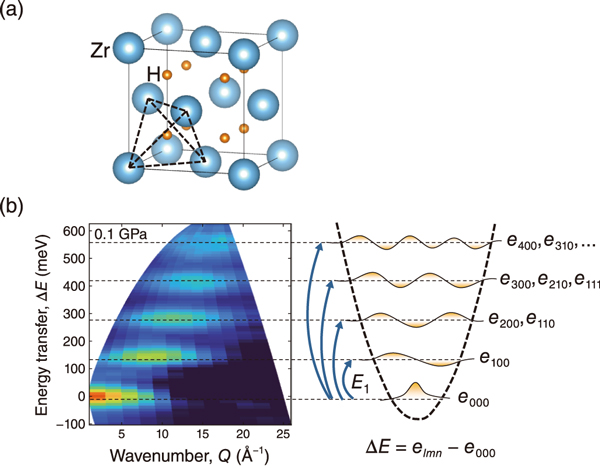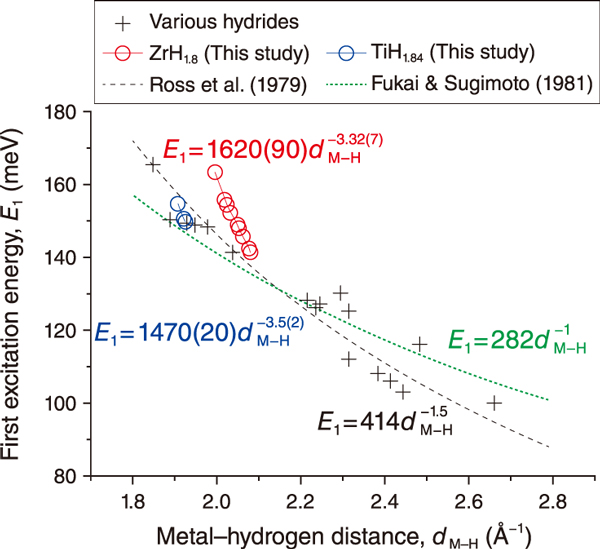
Fig.1 (a) Fluorite-type structure, (b) correspondence between the wavenumber (Q)-energy (E) map and excitation levels of the hydrogen vibrating in the metal lattice

Fig.2 Relationship between the metal-hydrogen atomic distance and the first excitation energy
Hydrogen in metals is important from the viewpoint of basic science and industrial applications because it remarkably alters the properties of the original metal. Moreover, metal hydrides are the most promising candidates for building room-temperature superconductors at high pressures and have been subjected to intense competitive research in recent years. The interaction between lattice vibrations and conduction electrons is the key to superconductivity; thus, it is important to know the vibrational states of hydrogen under high pressure for discovering materials with high superconducting transition temperatures.
Inelastic neutron scattering is a very powerful method to study the vibrational states of hydrogen in metals. However, its weak signal limits the measurable pressure range below 3 GPa, thereby hindering the observation of pressure-induced changes in hydrogen vibration. In this study, we extended the available pressure range by developing a new apparatus and performed experiments at 21 GPa, which is the highest pressure applied as yet in the world for inelastic neutron scattering experiments.
Experiments were conducted at BL01 and BL21 at J-PARC. Fluorite-type ZrH1.8 and TiH1.84 (Fig.1(a)) were pressurized using a Paris-Edinburgh press. In these materials, the hydrogen atoms in the tetrahedral sites formed by the fcc metal lattice (dotted lines in Fig.1(a)) behave as ideal quantum harmonic oscillators (QHOs). The characteristic wavenumber (Q)-energy (E) map in Fig.1(b) reflects the vibration: the excitation energy is discrete, and the intervals are nearly equally spaced. When the sample is pressurized, the first excitation energy E1 linearly increased, suggesting that the hydrogen atoms shrink under pressure; this agrees with the inference drawn from the relation between E1 and the spread of wave function Δx, as expressed by the equation (Δx)2 = ℏ2/2ME1 (where M is the proton mass). The rate of the shrinkage of the hydrogen atom is larger than that of the metal lattice, suggesting that hydrogen atoms contracted preferentially.
Fig.2 shows a comparison of the E1 vs. metal-hydrogen distance (dM-H) relationship for ZrH1.8 / TiH1.84 at high pressures and various metal hydrides at ambient pressure. The increase in E1 with decreasing dM-H by compression is steeper than the trend of various metal hydrides. This is attributed to the fact that compression by pressurization (i.e., physical pressure) affects the potential shape more directly than pseudocompression by the substitution of metal elements (i.e., chemical pressure).
The method developed in this study can be applied not only to the incoherent scattering of hydrogen but also to other types of scattering and other materials. It is expected to be useful in future studies on the dynamics of various materials under high pressure.
(Takanori Hattori)